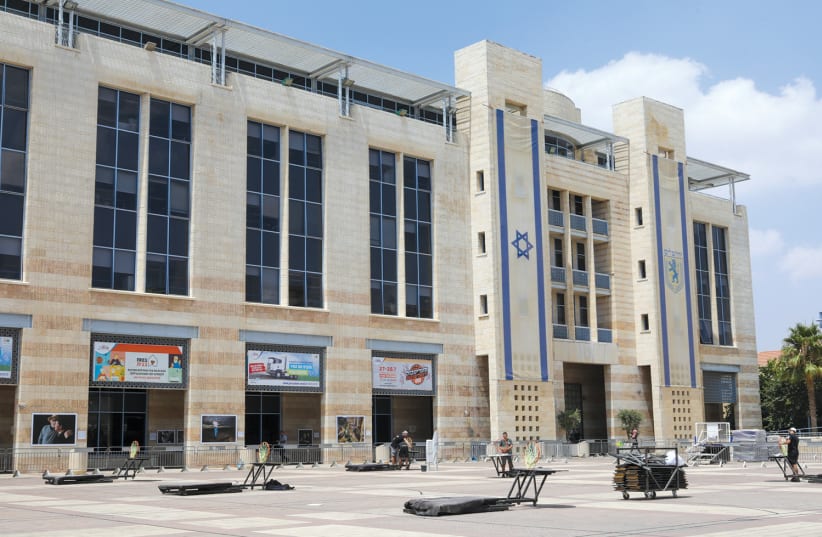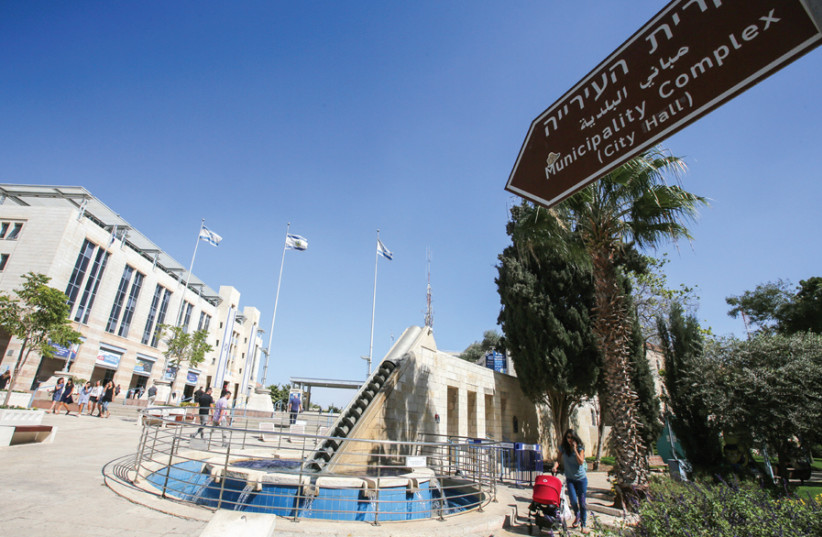It seems the municipality's construction fever is causing a lot of tension between several sides, as no less than three significant construction plans in different areas of the city have aroused much emotion among residents and politicians.
Two housing plans for rentals in the city center, located in the arts and culture complex between Bezalel, Ussishkin and Menora streets – one of them in the area of Beit Ha’am (“Gerard Bachar”), the other at the corner of Ussishkin-Menora – are at the center of political struggles between haredi and pluralist representatives. A large project for the Atarot area is causing tension at local and national levels.
In the first plot, the plan allows for additional stories on top of the Gerard Bachar historic building, turning it into a 10-story structure. According to the plan, the permitted uses of a public building for cultural purposes can be a theater, a performance hall and offices, a dance studio that includes rooms for rehearsals and performances, and commercial areas for a café. In the second plot, a new 10-story building is planned, which will include commercial areas, two kindergartens and cultural spaces. In both projects, there will be 200 housing units for rent, with maximum area in those units between 35-50 sq.m.
The Atarot plan brings up other issues: On one hand, this plan raises a lot of hopes among those seeking to ensure the capital's territorial continuity, especially to prevent any case of future relinquishment of the city's northern “finger." This plan, which offers 9,000 housing units of various sizes, was until not long ago (and some observers say that it is still) a “hot potato” in the hands of city administrators, for fear the government wouldn’t sign off on it so as to not anger the American administration. Last week, it was finally approved by the local planning committee and by city council, and submitted, as required by law, to the district planning committee, which belongs to the Interior Ministry.
Sources at Safra Square say that although nothing has been officially said, it seems that at the top level of the government, there is a tendency to "hold the horses" before this plan reaches the finish line and goes out for tenders to begin construction. The Atarot plan’s challenge is to stop, or at least minimize, a Palestinian plan to build there on an 18-dunam area, on the border between Atarot and Beit Hanina, where a permit to build 400 units has already been granted.
But in the case of Atarot, the concern that Palestinians may anticipate the plan is only one of the municipal headaches. At Safra Square, what really matters now is to understand – or to decide – which residents will move there. Will it be open for everyone, or will it be a haredi-oriented project? (Haredim are by far the largest group of residents moving out of Jerusalem for lack of housing solutions suiting their needs.)
Opposition head at city council, Ofer Berkovitch (Hitorerut), says that if the Atarot project is designated for haredim, this should be leveraged so that from now on they cannot demand municipal services (largely education) if they choose to live in pluralist neighborhoods. Berkovitch maintains that this is the best opportunity to seize upon some kind of status quo regarding a new division of city areas of influence.
As for the city center two projects, there are at least two major reasons for the opposition to them. The first is a passionate opposition from residents of the nearby Nahlaot neighborhood, who fear this will be the first of many towers in their quiet neighborhood. The second is, once again, the haredi versus pluralist issue. The local committee, headed by Deputy Mayor Eliezer Rauchberger (United Torah Judaism), has changed the official definition of the project from “student dormitories” to “small affordable rental apartments,” immediately raising the suspicion that instead of secular students, the city center would be become another haredi bastion – not to mention that families, unlike students, largely have cars and will thus add to the already jammed traffic there.
However, there are two things to bear in mind, no matter what Rauchberger plans: haredim tend to buy houses, and rarely go for a 35- or maximum 50-sq.m. apartment.

